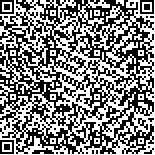| 摘要: |
| 为了解养殖小黄鱼精子的生理特性及超低温冷冻保存效果,用计算机辅助精子分析系统(CASA)检测了小黄鱼精子的运动参数及盐度、pH、葡萄糖、离子等环境因子的变化对其精子活力的影响;探究了稀释液、抗冻剂、稀释比及降温高度等对精子冷冻保存效果的影响。结果显示:小黄鱼精液的精子密度为(6.92±1.20)×109/mL。精子经自然海水激活后,运动率、运动时间及寿命分别为(59.31±4.85)%、8.44±0.87min及12.20±0.50min,直线运动速率(VSL)、曲线运动速率(VCL)及平均路径运动速率(VAP)分别为11.96±5.21、25.38±7.19和22.33±6.88μm/s。精子运动适宜的盐度范围为25-30、适宜的pH范围为7.5-8.5,精子在盐度25或pH 8.0的海水中活力较好。精子激活效果较好的葡萄糖浓度为0.7-0.9mol/L;浓度0.9mol/L时,精子活力较好。精子激活效果较好的KCl、NaCl、MgCl2及CaCl2溶液浓度分别为0.4-0.5、0.4-0.6、0.7-1.0和0.2-0.3mol/L;精子在KCl及CaCl2溶液中活力相对较差,运动率等参数显著低于对照组;精子在不同人工海水中的运动率显著低于自然海水中的运动率,但精子在单一离子缺陷型人工海水及全人工海水中的运动率无显著差异。以0.25mL麦细管为冻存管,6种稀释液、不同浓度的4种抗冻剂、5种稀释比及5种降温高度对小黄鱼精子冷冻保存效果的影响试验发现,以HBSS液1︰3稀释精液,添加10% DMSO及15% PG为抗冻剂,液氮面上3.5cm处降温5min后投入液氮中保存效果较好,冻精解冻后运动率达(43.57±2.59)%及(43.06±6.77)%。 |
| 关键词: 小黄鱼 CASA 生理特性 精子冷冻 |
| DOI:10.11693/hyhz20191000198 |
| 分类号:Q492;Q953;S917 |
| 基金项目:浙江省科技计划项目,2017C02013号。 |
附件 |
|
| PHYSIOLOGICAL CHARACTERISTICS AND CRYOPRESERVATION EFFECT OF LARIMICHTHYS POLYACTIS SPERM |
|
ZHENG Xue-Bin1, DU Chen1, WANG Jing-Qian1, ZHAN Wei2, XIE Qing-Ping2, LOU Bao2, ZHU Jun-Quan1
|
|
1.Key Laboratory of Applied Marine Biotechnology Ministry of Education, Ningbo University, Ningbo 315211, China;2.Zhejiang Academy of Agricultural Sciences, Hangzhou 310016, China
|
| Abstract: |
| To study the physiological characteristics and understand the cryopreservation effect on sperm motility of cultivated Larimichthys polyactis, we determined the kinetic parameters of L. polyactis sperm using a computer-assisted sperm analysis (CASA) system and the effects of several environmental factors (salinity, pH, glucose, ions, etc.) on motility of sperm. Moreover, we established the optimal protocol (including extenders, cryoprotectants, milt/diluent ratios, cooling rate, etc.) for the sperm cryopreservation. The results show that the mean density of sperm was (6.92±1.20)×109/mL. When sperm was activated by filtered seawater, the percentage of motile (MOT), moving time (MT), and life span (LS) of sperm were (59.31±4.85)%, 8.44±0.87min, and 12.20±0.50min, respectively; and the straight line velocity (VSL), curvilinear velocity (VCL), and average path velocity (VAP) of sperm were 11.96±5.21, 25.38±7.19, and 22.33±6.88μm/s, respectively. The suitable salinity for sperm activation was 25-30; the suitable pH was 7.5-8.5, and the highest motility were obtained at salinity 25 or pH 8.0. In addition, a better motility was detected when sperm was activated in glucose solutions at the concentration of 0.7-0.9mol/L, and the highest motility was obtained at 0.9mol/L. What's more, a better motility was also detected when sperm was activated in solutions containing 0.4-0.5mol/L potassium chloride, 0.4-0.6mol/L sodium chloride, 0.7-1.0mol/L magnesium chloride or 0.2-0.3mol/L calcium chloride. The motility of sperm activated in potassium chloride or calcium chloride solutions was significantly lower than the control group (sperm was activated in filtered seawater). Besides, the MOT of sperm that obtained in control group was significantly higher than groups of various artificial seawater, but it showed no significant difference in different types of artificial seawater. For cryopreservation, 0.25mL straw was used; 6 types of extenders, 4 types of cryoprotectants in different concentrations, 5 ratios (milt to diluent), and 5 cooling rates (realized by adjusting the height above the surface of liquid nitrogen) were tested. The results show that the semen diluted by HBSS solution with 10% DMSO or 15% PG at a ratio of 1︰3 and suspended 3.5cm above the surface of liquid nitrogen for 5 min produced better results; and the MOT of post-thaw sperm was (43.57±2.59)% or (43.06±6.77)%, respectively. |
| Key words: Larimichthys polyactis CASA physiological characteristics sperm cryopreservation |
